
By Justin Champion
Think back to the last blog post you read. Did you skim through it as opposed to reading it because the introduction didn’t keep your attention? Did the content seem to ramble as opposed to getting to the point in a helpful and practical way? Were you unable to find a helpful next step to continue your journey?
If you answered “yes” to all of these questions, then chances are the author who wrote the blog post didn’t pay close enough attention to the structure of their content. And they’re suffering the consequences: You, along with many others, stopped reading the post.f
Once you have a topic and title for your blog post, the next step is to create and structure its content.
Let’s review how to go about this.
To start, choose a format for the post so that both people and search engines can easily read and understand it.
When writing for your audience, you want to match the attitude of your readers and the subject matter. Consider if your writing should be serious, fun and personable, uplifting, quirky and humorous, or authoritative. Readers might not be able to point out that the tone is what’s off-putting about your content and therefore your brand, but it’s the little things that can leave a big impression.
Your goal should be to create an interesting narrative with each post that your audience can follow. This all starts with having a solid structure for your post that readers recognize and therefore know what to expect.
One easy structure to use is the List Formula. Start with an intro, list out the main points of the article, and then wrap it all up with a strong conclusion.
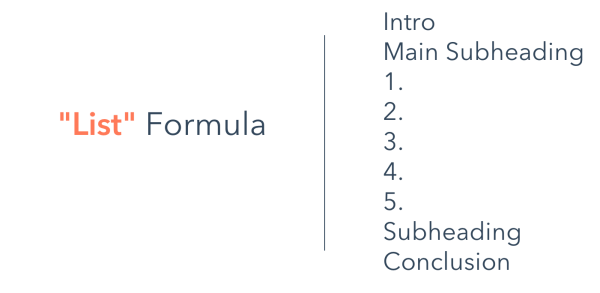
The How-To Formula is another easy-to-use and logical format. It begins with an introduction, there’s a section on why this matters to the reader that provides more context, and then you provide details on how to do something in a list format.
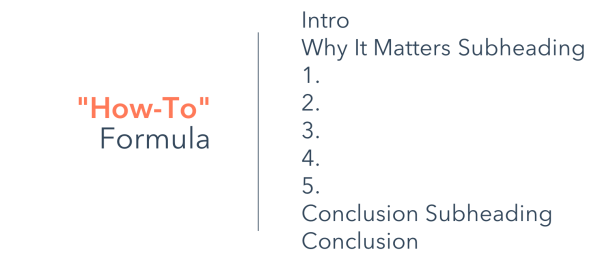
If you start with a formula for the backbone of your article, it’s easier to get started. It will be overwhelming to write an introduction without knowing where the piece is going to go. Start by filling in the main points and save writing the introduction and conclusion for after you’ve written the piece or created a solid architecture for the post.
When writing an intro, make it captivating. If you lose the reader in the first few paragraphs — or even sentences — of the introduction, they’ll stop reading even before they've given your post a read-through. Grab their attention, use humor, be empathetic, or grip the reader with an interesting fact or statistic.
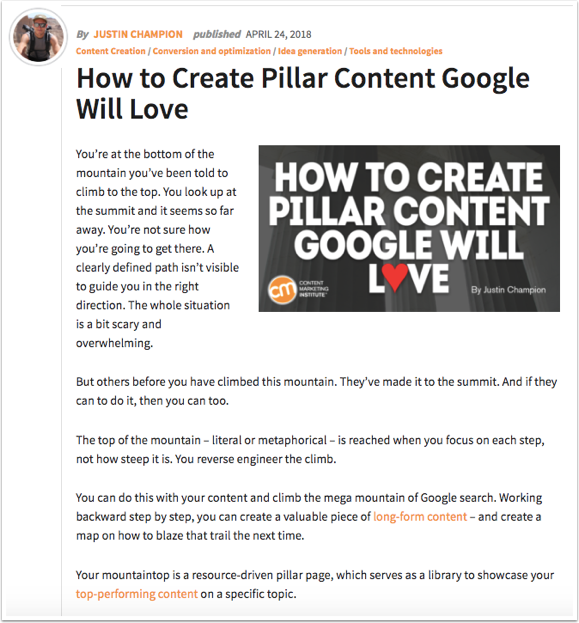
And describe the purpose of the post and explain how it will address a problem the reader may be having. It should be a follow-up to the title that they found interesting. This will give the reader a reason to keep reading and give them a connection to how it will help them improve.
If you read the first few lines of this blog post, would you want to keep reading?
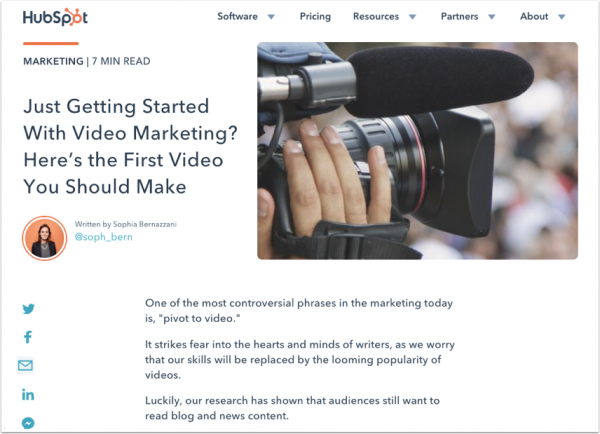
What about this blog post?
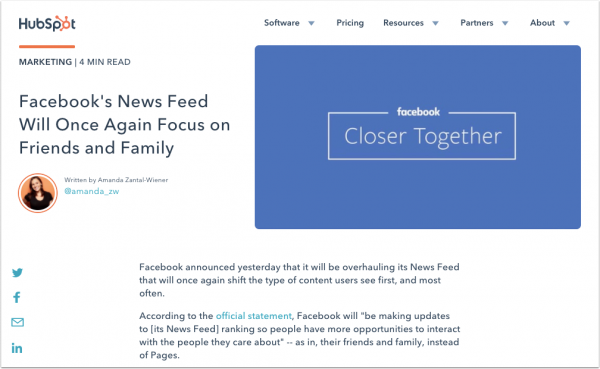
Keep your buyer persona in mind and think about what would entice them to keep on reading.
And what about the rest of your blog post?
The body of your blog post is where your readers will undoubtedly derive the most value. HubSpot did an analysis and found the ideal blog post length is roughly 2,100 words, but that will vary depending on your topic. Always solve for the reader first. Make sure you cover your topic in full and have met the expectations that your blog title promised.
Let’s review some formatting best practices to ensure you’re creating effective blog posts that are remembered.
Mention your keyword at a normal cadence throughout the body of your post and in the headers when it makes sense. That means including your keywords in your copy but only in a natural, reader-friendly way. Don't go overboard, though, at the risk of being penalized for keyword stuffing.
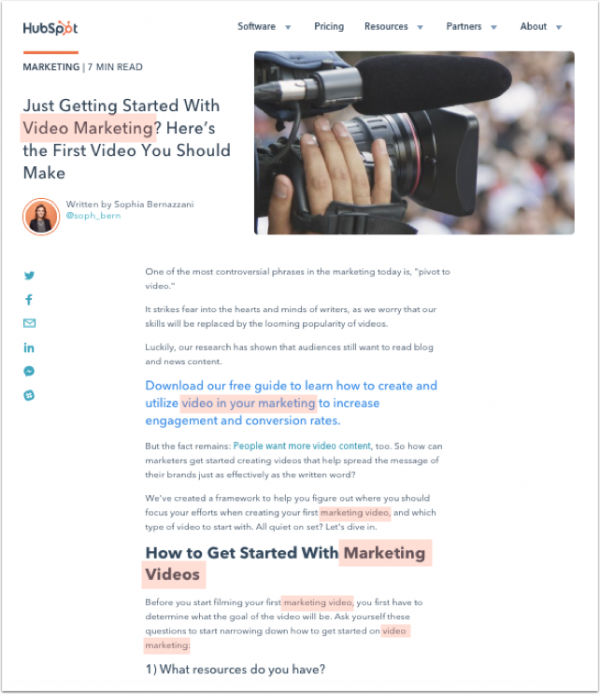
Whenever you create content, your primary focus should be on what matters to your audience, not how many times you can include a keyword or keyword phrase in that content. Here’s a pro tip to avoid keyword stuffing: Consider writing the synonyms of your keyword as opposed to keyword stuffing. For example, digital nomad is a main topic I write about often, but instead of repeating that term over and over in my content, I change it up with synonyms like “remote worker” or “telecommuter.”
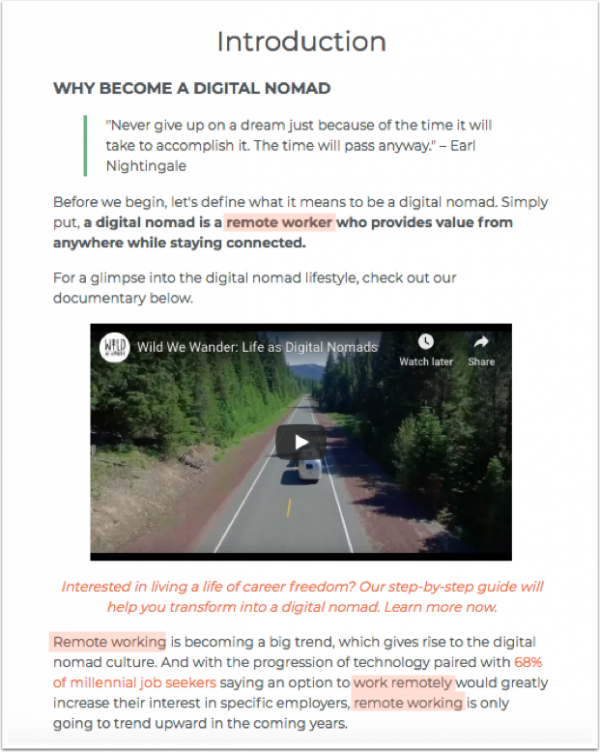
And while text is one of the most important facets of an effective blog post, your content needs to be more than just text. You need to pay attention to how you present the content. This brings me to my next best practice: Whitespace is your friend.
Whitespace is the empty space on the page. It allows the visitor to focus on the content, not the clutter. Don’t write long paragraphs that form into huge blocks of text — this will make your information look dense and hard to read.
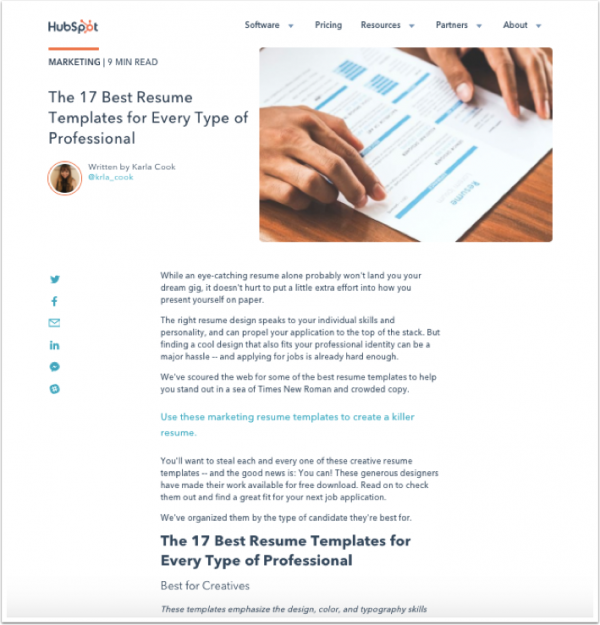
As you can see in this example, there’s plenty of whitespace on the side margins of the post, around the title and first image, and between the paragraphs of text within the post. The space makes the post more easily digestible — nothing is crammed together, and though the post is long, it doesn’t feel overwhelming or hard to read.
You can also break up the text in your blog post by using sub-headers and bullets or numbered lists to highlight your points.
Sub-headers are another on-page SEO element. Sub-headers organize and break up your blog post into different sections to signal to Google (and your reader) what the post will cover.
Sub-headers should be written with H2 tags or smaller — never H1 tags, which signal a title. Use sub-headers to split up sections of your blog post. For example, this blog post has a section on creating ideas on your own. Notice how it offers subheadings within this section as well to continue splitting up content to make it easier to digest. I did this using an H3 tag.
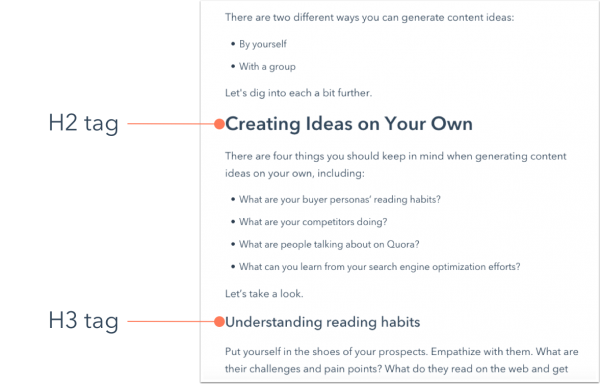
Bolding important text can also help readers quickly understand the key takeaways from the post. Though, don’t go overboard with bolding. If the majority of a paragraph is bolded, then it’s possible your reader won’t retain the important information you want them to remember. Here’s a pro tip: Consider only bolding one sentence per paragraph and possibly just bolding one sentence every few paragraphs. In this case, less is more.
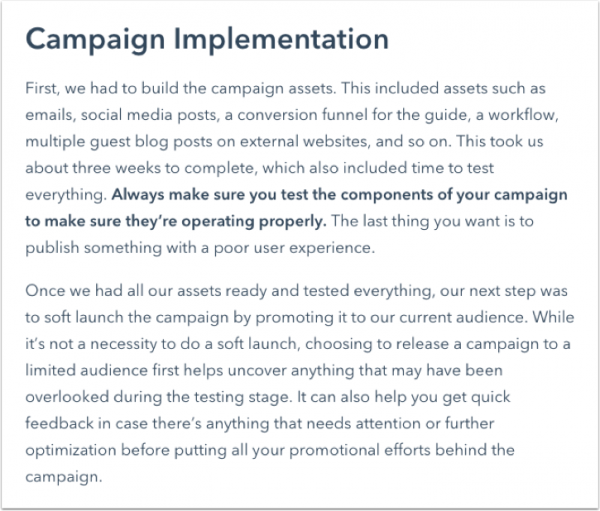
Once you’ve finished the text portion of your post, don’t forget to make it stand out with the use of visuals and multimedia elements to break up your text.
Start by using a featured image. A featured image usually sits at the top of a blog post and is another element to draw readers in to learn more.
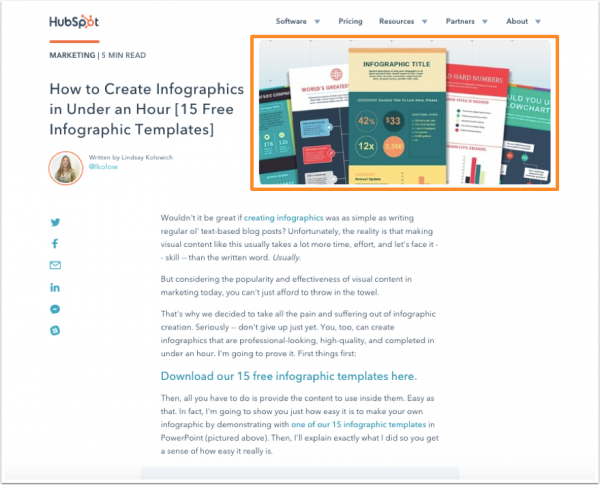
A featured image is also the image that shows up on social media when your content is shared. The image should reflect what the story is about, intrigue readers, or provoke them. It doesn’t need to illustrate directly what your post is about, but it should be loosely related to your content. While most people enjoy a great cat photo, it may not always be relevant to your content.
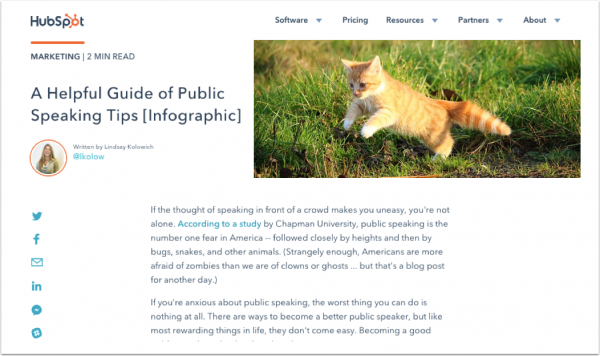
And throughout the body of your blog post, use multimedia content wherever it's possible to break up the blog post and re-engage your reader. Add images, videos, audio recordings, embedded social media posts, and so on. HubSpot sometimes includes an audio version of the blog post or includes a video on the related topic. It changes it up for the reader but also helps them digest the content in a different way. Changing up the format of your blog post will provide additional value to your reader while making sure their eyes are focused on what they're reading and seeing. See the difference? The blog post without any visuals looks a lot less interesting and welcoming.
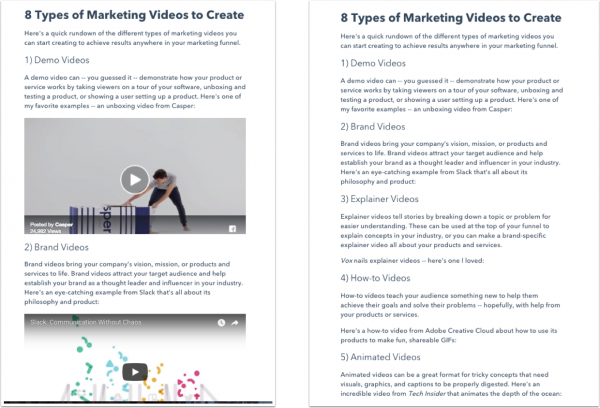
Before moving on, don't forget about mobile. Mobile users consume more than two times the minutes online compared to desktop users. This means having a blog that's responsive or designed for mobile has become more and more critical. Make sure to keep mobile in mind as you structure your blog post. What would the experience be like if someone were to read your blog post on their mobile phone instead of a desktop computer? Would you format it differently?
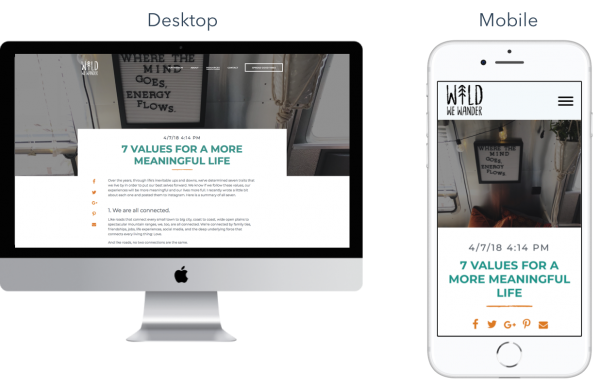
And there you have it – the fundamental strategy and best practices for creating and structuring content that attracts, engages, and delights your ideal audience.
About the author:
Justin Champion is the author of Inbound Content, Content Professor for HubSpot, Adjunct Lecturer for the University of Florida, and one half of Wild We Wander. Justin created HubSpot Academy's Content Marketing Course, which has awarded over 30,000 certifications to professionals across the globe since November 2016. You can find him on Twitter @JustinRChampion.

by Jonathan Franchell, CEO of Ironpaper - For more tips and hacks: Need to remove a new line after h1 tags? Both web designers and SEO practitioners need to employ headline tags: H1, H2, H3 in several ways to improve web page structure and tag...

The Crowded Arena of the IT Marketplace Updated December 2024 The Information Technology (IT) landscape is experiencing rapid growth and intensifying competition. IT spending is projected to reach nearly 5.1 trillion U.S. dollars in 2024, a...

The marketing industry is transforming significantly due to generative AI and increasing market complexity. Gartner's prediction of a 25% decline in traditional search traffic suggests that the era of search engines is dying. AI tools, particularly...

Updated December, 2024 The field of digital marketing is evolving rapidly in response to new technology and changing buyer expectations. To help career-minded marketers, we’ve rounded up the top 10 skills needed to succeed in the field. These are...
